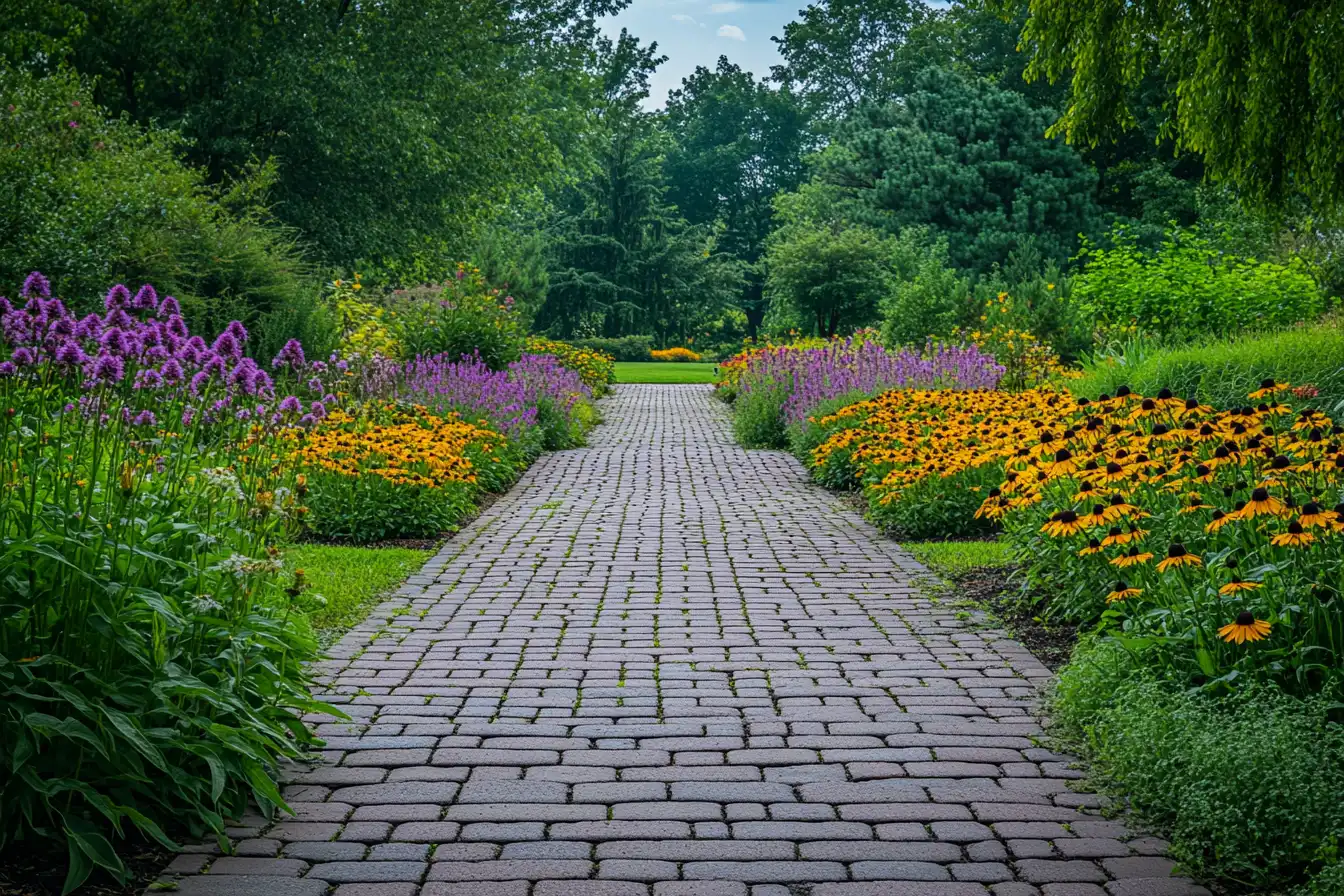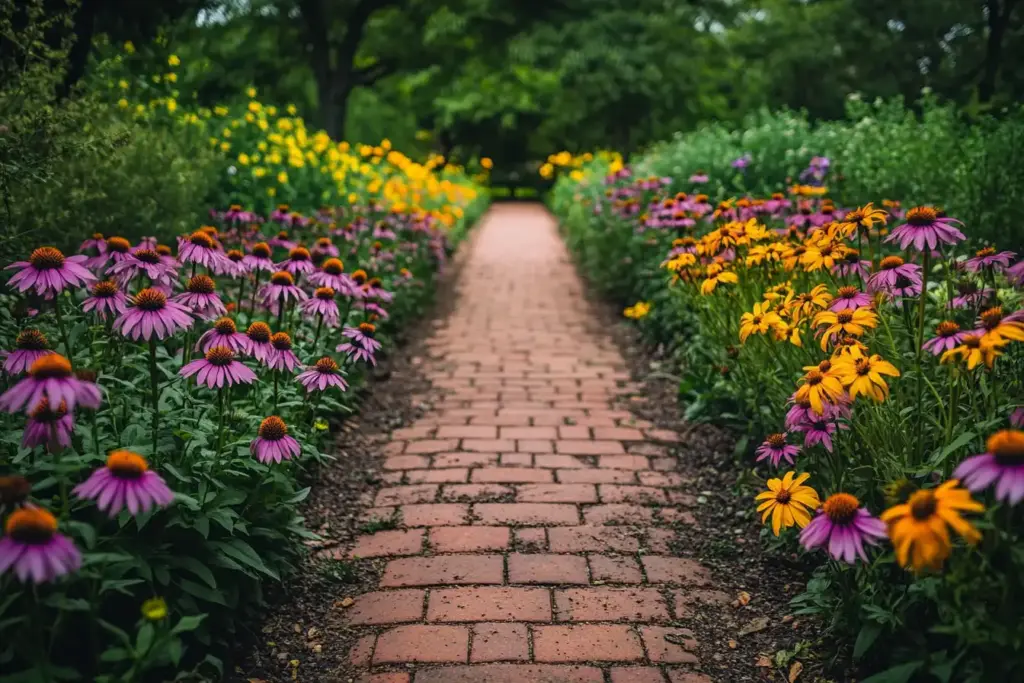If your garden receives at least six hours of sunlight daily, you’re in luck — there are countless perennial flowers that thrive in full sun and return year after year with minimal effort. These vibrant bloomers aren’t just hardy; they’re the backbone of a low-maintenance flower garden designed for both beauty and ease. Whether you’re drawn to bursts of color, eager to support pollinators, or need drought-tolerant plants, this roundup of the best perennial flowers for full sun offers inspiration for every style and soil type. Let’s explore these sunny garden essentials that promise long-lasting beauty with little fuss.
Table of Contents
🌸 1. Coneflower (Echinacea)
Known for their bold, daisy-like petals and distinctive spiny centers, coneflowers are a staple in sunny perennial gardens. Native to North America, these resilient bloomers add vibrant splashes of pink, purple, orange, or white throughout the summer.
Why Coneflowers Stand Out:
- Drought-tolerant once established
- Attract pollinators like bees and butterflies
- Excellent cut flowers for bouquets
- Deer-resistant and cold-hardy
Growing Tips:
Coneflowers flourish in well-drained soil and full sun. Deadheading spent blooms will encourage more flowering and keep your garden tidy. These perennial flowers are perfect for borders, cottage gardens, or mixed beds.
- Hardiness Zones: 3–8
- Light Needs: Full to partial sun
- Soil: Slightly sandy, well-draining
💡 Garden Tip: Pair coneflowers with ornamental grasses or salvia for layered texture and extended bloom time.
🌼 2. Black-Eyed Susans (Rudbeckia hirta)
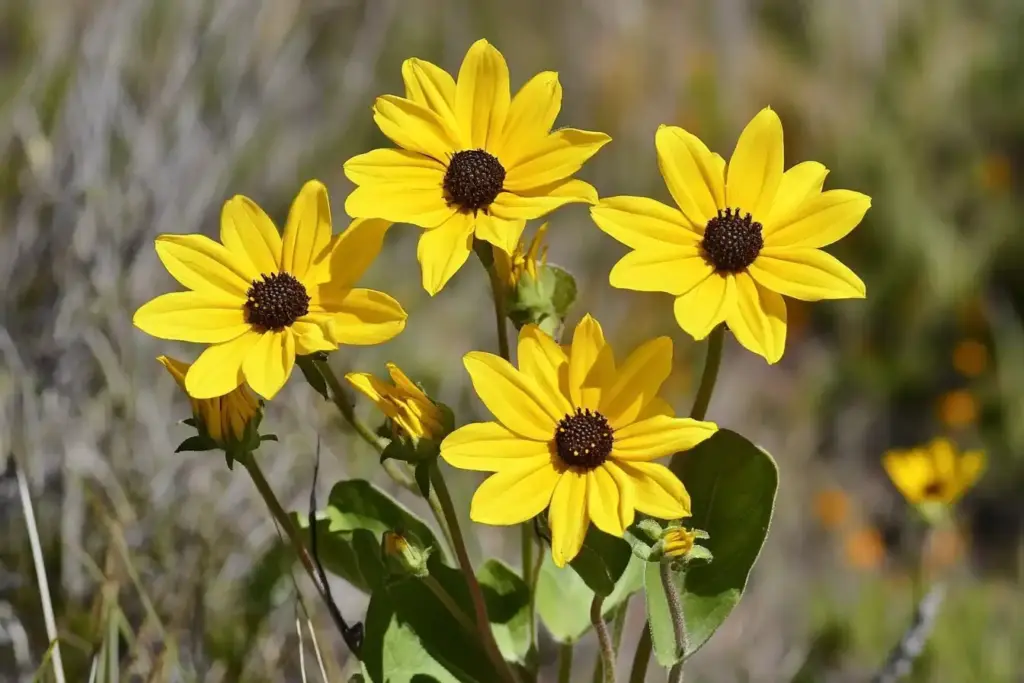
Few plants bring sunshine to the garden quite like Black-Eyed Susans. With their golden-yellow petals and contrasting dark centers, these cheerful perennial flowers create a bold visual impact from midsummer into fall.
Why Black-Eyed Susans Are a Garden Favorite:
- Low-maintenance and beginner-friendly
- Bloom generously over a long season
- Tolerate drought and poor soil once established
- Naturalize easily and return stronger each year
Growing Tips:
Plant them in full sun for the best flower production. While tolerant of dry spells, they’ll bloom more prolifically with moderate watering. Deadheading spent flowers encourages continued flowering and a neater look.
- Hardiness Zones: 3–9
- Light Needs: Full sun
- Soil: Well-draining, acidic to neutral
💡 Garden Tip: Combine with coneflowers or Russian sage for a pollinator-friendly, drought-resistant bed.
🌼 3. Tickseed (Coreopsis)
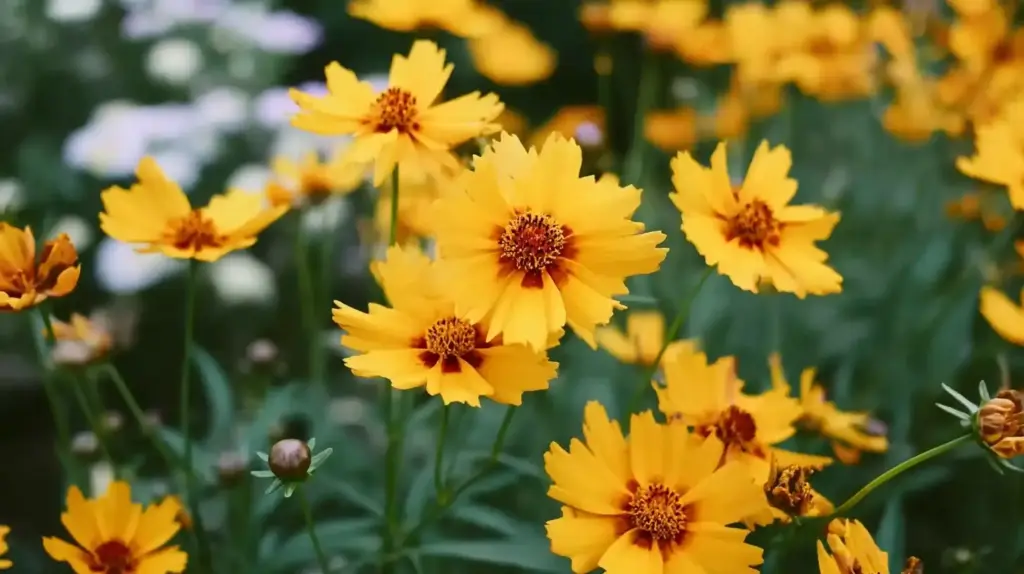
Tickseed, or Coreopsis, is a lively perennial flower known for its long-lasting, daisy-like blooms in sunny shades of yellow, orange, red, and pink. A favorite among beginner and seasoned gardeners alike, this sun-lover is nearly carefree once established.
Why Gardeners Love Tickseed:
- No deadheading required for continued blooms
- Mildew-resistant and low-maintenance
- Attracts bees, butterflies, and beneficial insects
- Naturalizes easily in full-sun beds and borders
Growing Tips:
Coreopsis flourishes in sandy, well-draining soil and full sunlight. It’s ideal for xeriscaping and can tolerate periods of drought. Divide plants every few years to keep them vigorous and to spread the color to new areas of the garden.
- Hardiness Zones: 2–11
- Light Needs: Full sun
- Soil: Sandy or average, well-drained
💡 Garden Tip: Tickseed works wonderfully in wildflower gardens and alongside lavender or salvia for extended bloom interest.
🌼 4. Shasta Daisies (Leucanthemum × superbum)
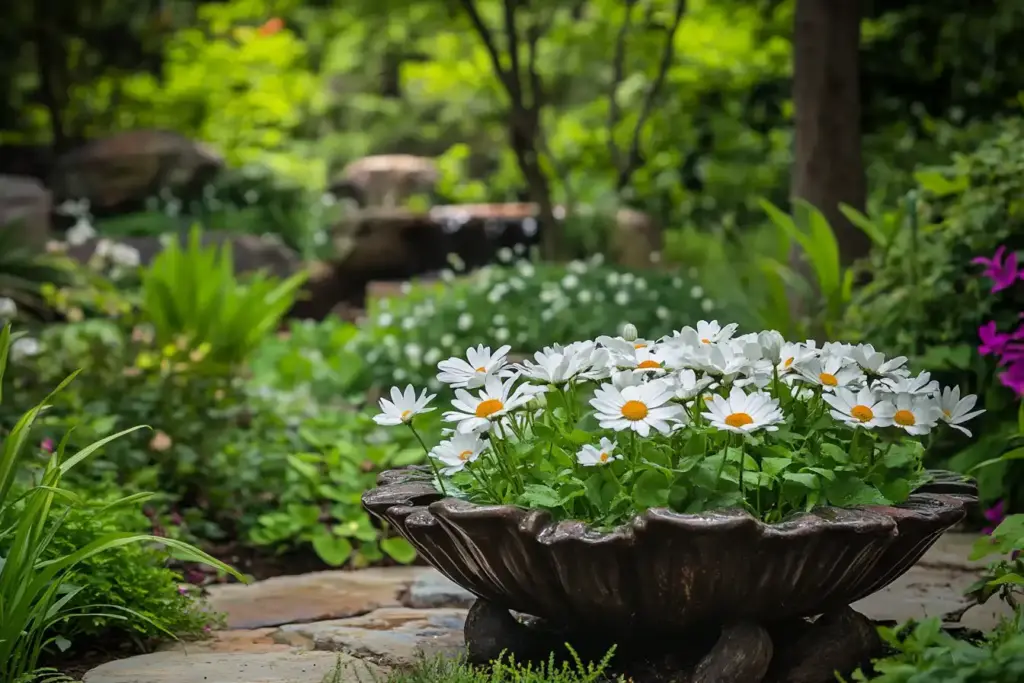
Shasta daisies bring effortless elegance to any sunny garden space. With crisp white petals and sunny yellow centers, these cheerful perennial flowers offer a clean, classic look that pairs well with almost any plant combination.
What Makes Shasta Daisies Special:
- Long bloom season with regular deadheading
- Sturdy stems make excellent cut flowers
- Resistant to most pests and diseases
- Tidy, clump-forming habit ideal for borders
Growing Tips:
Plant Shasta daisies in well-drained, loamy soil and give them full sun for the best blooms. Deadhead regularly to extend the flowering season, and divide clumps every 2–3 years to maintain healthy growth.
- Hardiness Zones: 5–9
- Light Needs: Full to partial sun
- Soil: Loamy, well-draining, slightly acidic
💡 Garden Tip: For a cottage-style garden, pair Shasta daisies with yarrow or lavender to create a soothing white-and-purple palette.
🌿 5. Russian Sage (Perovskia atriplicifolia)
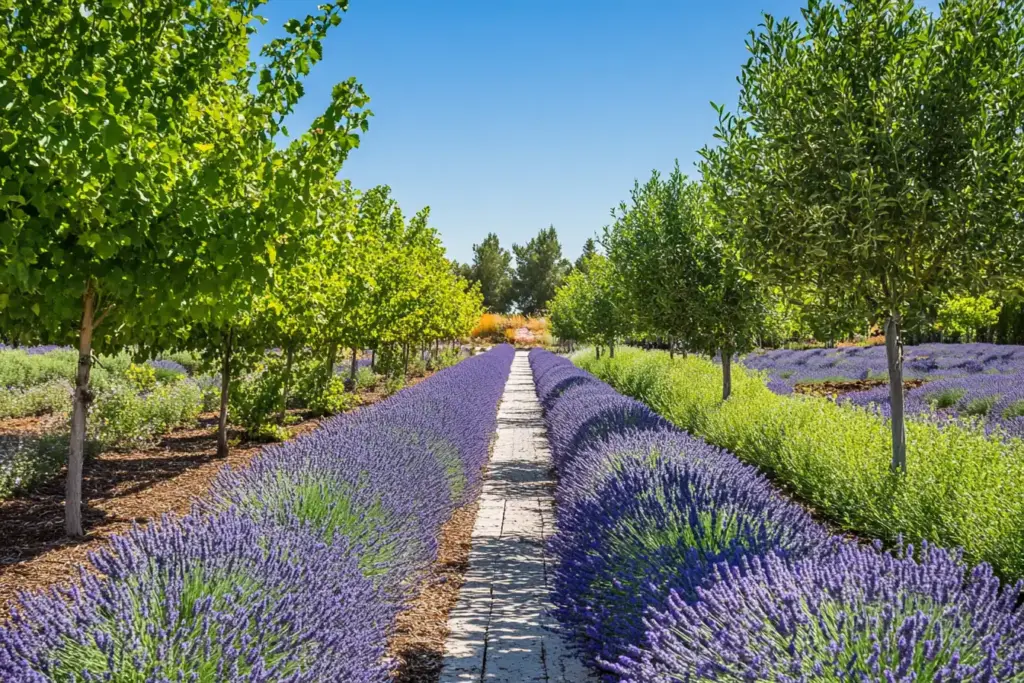
With its silvery foliage and spires of airy lavender-blue blooms, Russian sage adds texture, movement, and subtle color to full-sun gardens. This resilient plant is a magnet for pollinators and thrives even in tough, dry conditions.
Why Russian Sage Deserves a Spot in Your Garden:
- Exceptionally drought-tolerant once established
- Long bloom time — from midsummer into fall
- Deer- and rabbit-resistant
- Adds height and structure to flower beds
Growing Tips:
Russian sage prefers dry, sandy, well-drained soil and at least 6 hours of direct sunlight daily. It needs minimal water and should be cut back in early spring to encourage dense, fresh growth.
- Hardiness Zones: 3a–9b
- Light Needs: Full sun
- Soil: Sandy or loamy, well-drained
💡 Garden Tip: Plant alongside black-eyed Susans or butterfly weed for a striking contrast in color and form.
🌿 6. Yarrow (Achillea millefolium)
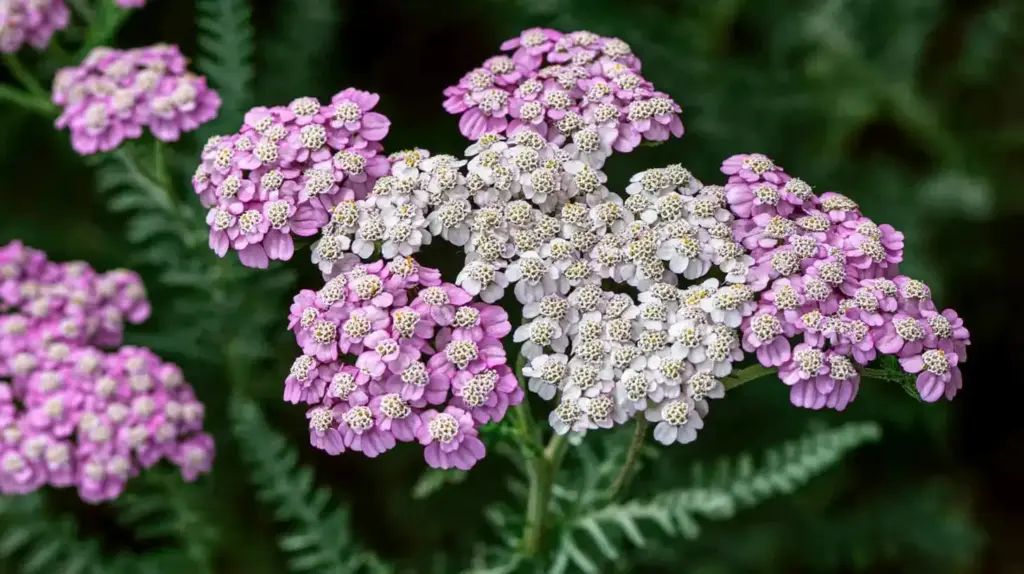
Yarrow is a rugged yet beautiful perennial flower known for its feathery, fern-like foliage and flat-topped clusters of blooms in shades of white, yellow, pink, and red. It’s a natural choice for sunny gardens where low-maintenance beauty is the goal.
Why Yarrow Works in Any Sunny Garden:
- Extremely drought-tolerant and low care
- Attracts pollinators and beneficial insects
- Repels deer and rabbits
- Excellent for borders, wildflower gardens, and cut flower arrangements
Growing Tips:
Yarrow thrives in full sun and well-drained soil, especially sandy or loamy mixes. Avoid overly rich soil, which can cause floppy growth. Once established, yarrow is nearly carefree and spreads readily if not managed.
- Hardiness Zones: 3–9
- Light Needs: Full sun
- Soil: Sandy, loamy, or even clay — as long as it drains well
💡 Garden Tip: Mix yarrow with coneflowers and salvia for a naturalistic look that supports bees, butterflies, and other pollinators.
🔥 7. Avens (Geum)
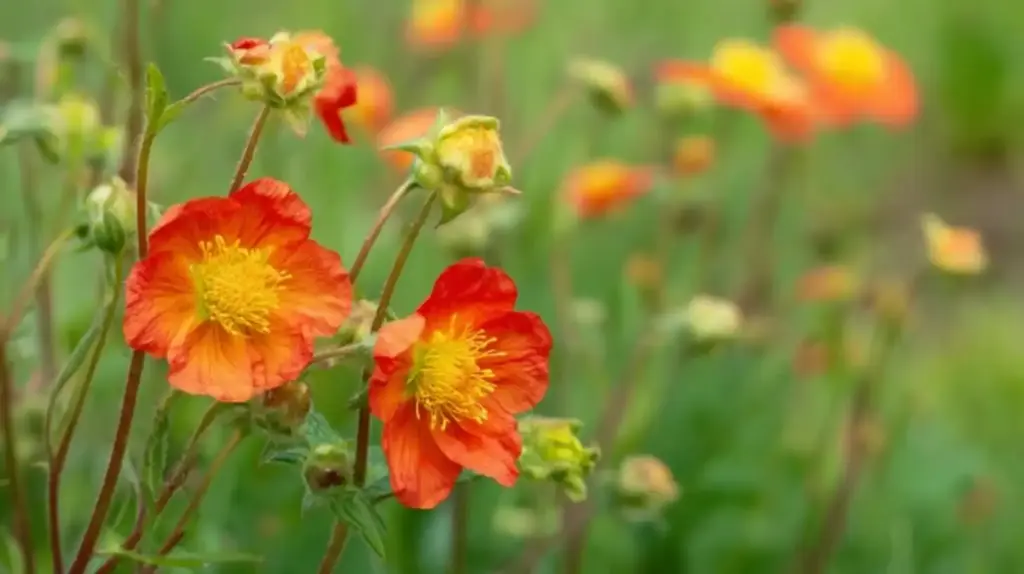
Avens, also known as Geum, bring a splash of brilliant color to the garden just as the season gets going. With compact blooms in shades of orange, red, and yellow, these charming perennial flowers are early risers in the blooming calendar — and surprisingly tough.
Why You’ll Love Growing Avens:
- Early bloomers that jumpstart spring color
- Compact and great for front borders or containers
- Deer-resistant and moderately drought-tolerant
- Easy to divide and multiply for more plants
Growing Tips:
Avens prefer well-drained soil that stays slightly moist but not soggy. Give them a spot in full sun to partial shade for best results. After flowering, deadhead to promote continued blooming. Divide every few years to keep clumps healthy.
- Hardiness Zones: 4–9
- Light Needs: Full sun (tolerates light shade)
- Soil: Moist but well-drained
💡 Garden Tip: Combine Avens with tickseed and Shasta daisies for a dynamic, long-lasting color trio in your garden.
💜 8. Lavender (Lavandula spp.)
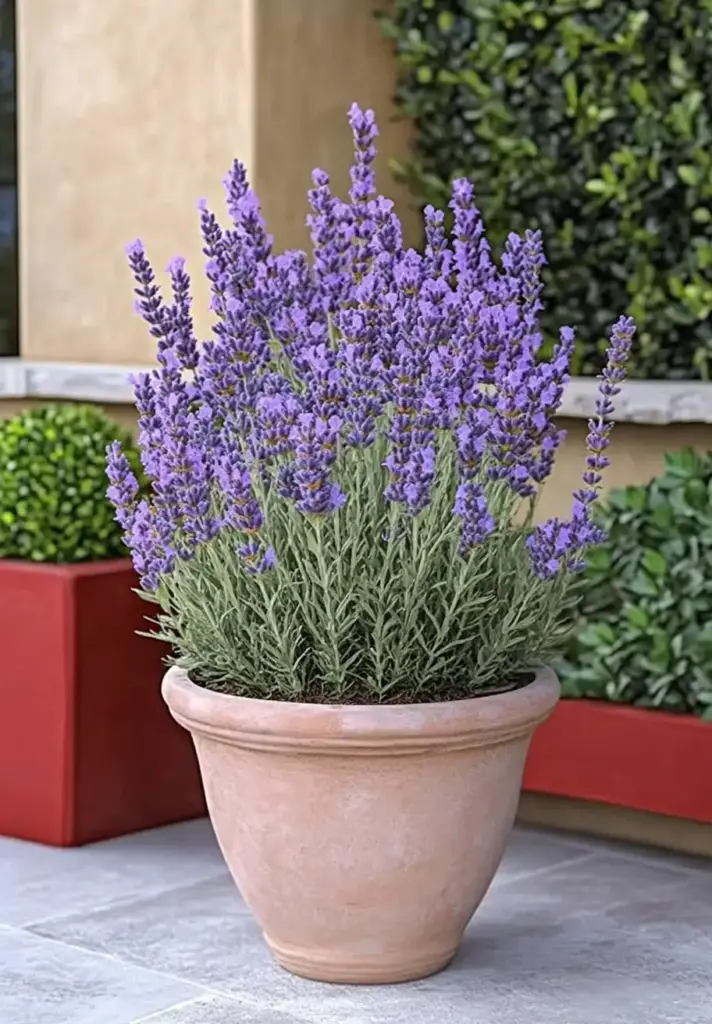
A staple in Mediterranean-style gardens, lavender is cherished for its aromatic purple blooms and silvery foliage. More than just a pretty face, lavender is a perennial flower that repels pests, attracts pollinators, and thrives in hot, dry spots where other plants might struggle.
Why Lavender Belongs in Your Garden:
- Fragrant blooms perfect for drying or fresh use
- Loves heat and drought once established
- Great for pollinators and natural pest control
- Evergreen in milder climates, adding year-round interest
Growing Tips:
Lavender prefers well-draining, slightly alkaline soil and full sun. Avoid overwatering, as it dislikes soggy conditions. Prune annually after blooming to maintain shape and promote healthy new growth.
- Hardiness Zones: 5–9
- Light Needs: Full sun
- Soil: Dry, well-drained, slightly alkaline
💡 Garden Tip: Use lavender along walkways or near seating areas to enjoy its scent up close. It also pairs beautifully with yarrow, salvia, and butterfly weed.
🔵 9. Salvia (Salvia spp.)
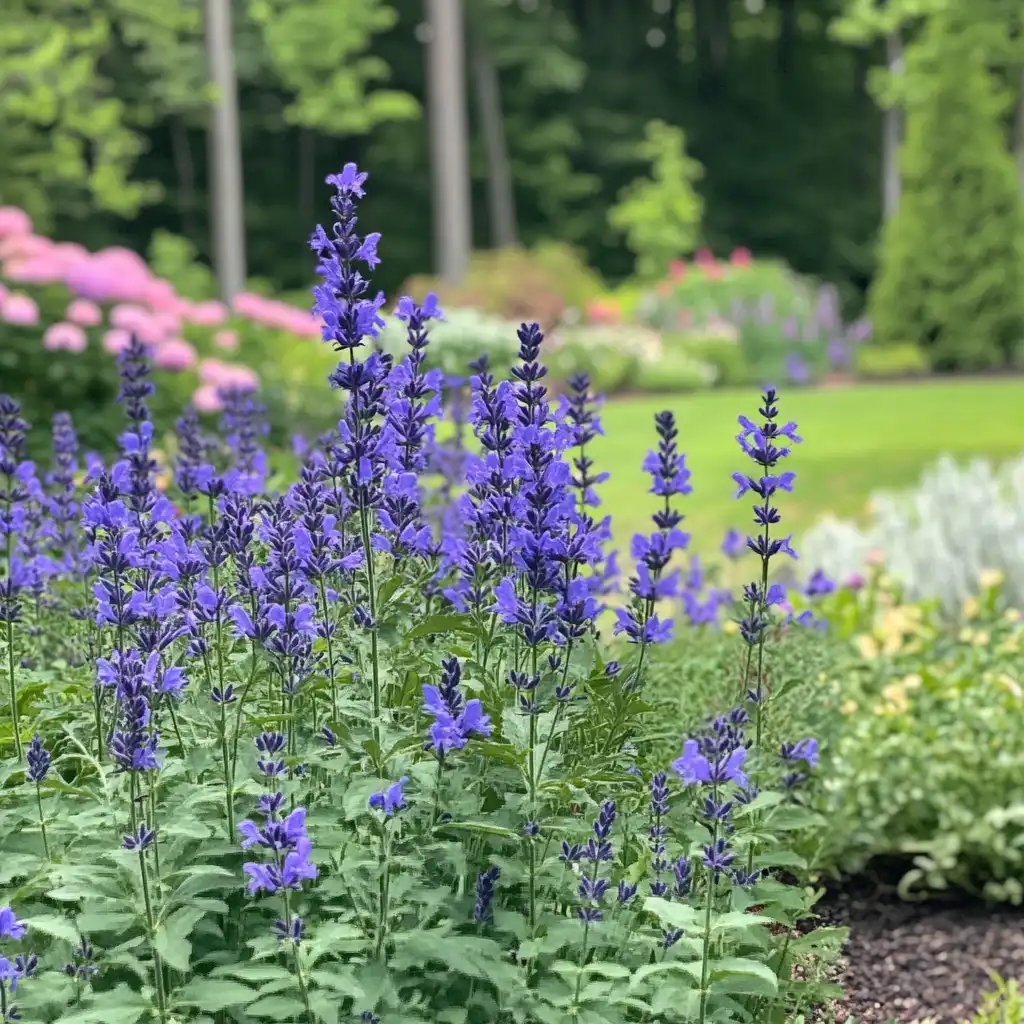
Salvia is a vibrant and hardy perennial flower that produces tall spikes of blossoms in striking shades of purple, blue, red, and pink. Beloved by bees, butterflies, and hummingbirds, salvia adds vertical interest and dynamic color to sunny garden beds.
What Makes Salvia a Standout:
- Long blooming season, often with a second flush after pruning
- Very drought-tolerant once established
- Ideal for pollinator gardens and sunny borders
- Adds rich, saturated color and texture
Growing Tips:
Plant salvia in full sun and loamy, well-drained soil. After the initial bloom, cut the plant back to encourage a second round of flowering. These perennial flowers do best with minimal fuss and occasional watering during dry spells.
- Hardiness Zones: 4–10
- Light Needs: Full sun
- Soil: Loamy, sandy, well-drained
💡 Garden Tip: Pair salvia with coneflowers and lavender for a drought-resistant trio that blooms from late spring through fall.
🧡 10. Butterfly Weed (Asclepias tuberosa)
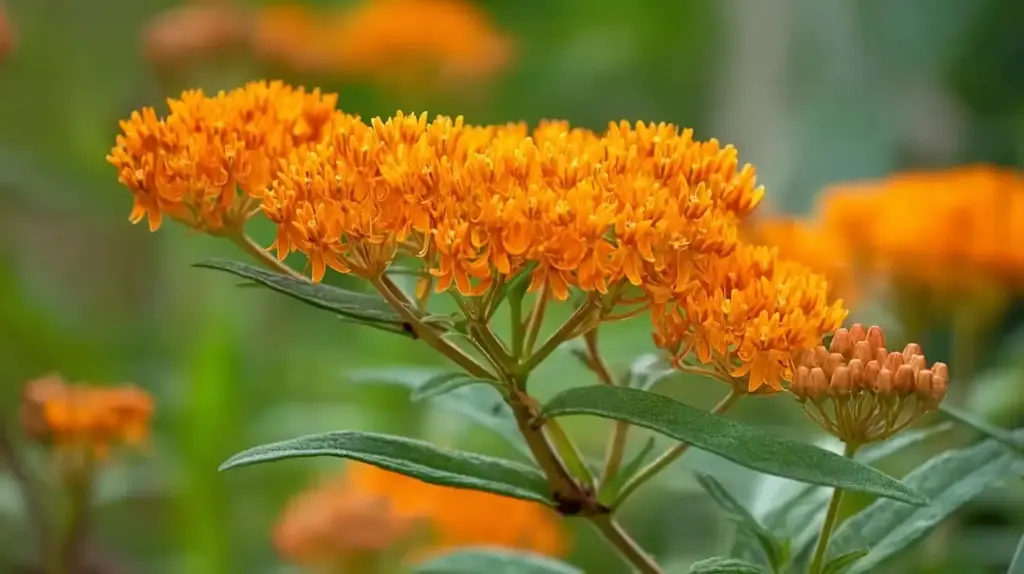
Bright, fiery orange blooms and a strong commitment to pollinator health make butterfly weed a must-have for any sunny garden. This tough, North American native perennial flower supports monarch butterflies and thrives in dry, challenging conditions.
Why Butterfly Weed Is a Must-Grow:
- Host plant for monarch butterflies
- Bright orange blooms add bold color
- Deer-resistant and drought-hardy
- Returns stronger each year with minimal care
Growing Tips:
Butterfly weed prefers full sun and well-drained soil — particularly sandy or loamy types. Once established, it needs little to no watering. Avoid disturbing the roots, as it doesn’t transplant easily.
- Hardiness Zones: 3–9
- Light Needs: Full sun
- Soil: Dry, sandy, or loamy and well-drained
💡 Garden Tip: Plant butterfly weed with Russian sage or black-eyed Susans for a heat-tolerant pollinator magnet combo.
❓ Frequently Asked Questions About Perennial Flowers for Full Sun
🌞 What are perennial flowers?
Perennial flowers are plants that live for more than two years. Unlike annuals, which die after one growing season, perennials return year after year, often becoming fuller and more vibrant over time.
🌿 Do all perennial flowers need full sun?
No. While many perennial flowers thrive in full sun, some prefer partial shade or filtered light. This article focuses on sun-loving varieties that need at least 6 hours of direct sunlight per day to perform their best.
💧 How often should I water perennial flowers?
Watering needs vary by plant and climate. Many full-sun perennial flowers are drought-tolerant once established, such as lavender and Russian sage. During the first year, water regularly to help them develop strong root systems.
🐝 Are perennial flowers good for pollinators?
Absolutely. Many of the perennials listed — including coneflowers, salvia, butterfly weed, and yarrow — are magnets for bees, butterflies, and hummingbirds, making them perfect for pollinator gardens.
🍂 Do I need to cut back perennial flowers in the fall?
Yes, most perennials benefit from being cut back after the growing season. However, some, like coneflowers, can be left standing over winter to provide food for birds and add visual interest.
🧤 How do I prepare the soil for perennial flowers?
Most full-sun perennials prefer well-drained soil. If your garden has heavy clay or compacted areas, consider amending it with compost, sand, or organic matter to improve drainage before planting.
🪻 Can I grow perennial flowers in containers?
Yes, many perennial flowers like lavender, salvia, and tickseed can thrive in pots. Just be sure to use a high-quality potting mix and place containers in a sunny location.
🌿 Final Thoughts on Growing Perennial Flowers in Full Sun
If your garden basks in sunlight, you’re ideally situated to grow some of the most stunning and resilient perennial flowers for full sun. From the wispy elegance of Russian sage to the fiery hues of butterfly weed, these sun-loving stars deliver year-round beauty with minimal upkeep. Many are also drought-tolerant, pollinator magnets, and delightfully low-maintenance — perfect for both beginners and seasoned green thumbs.
Pick a few standouts that align with your garden’s conditions and aesthetic, and you’ll be rewarded with a landscape full of vibrant color, fluttering wings, and long-lasting seasonal joy. For more inspiration, browse our full guide to flower garden ideas and create the blooming retreat you’ve always dreamed of.

